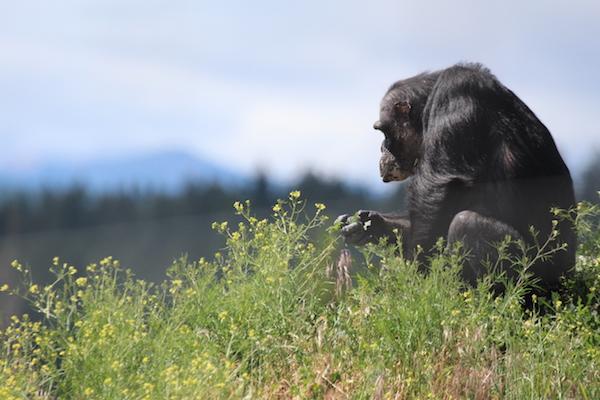

Sanctuaries met the set of alternative criteria for PTSD, compared withĠ.5% of chimpanzees in the wild (p = 0.04).Ĭitation: Ferdowsian HR, Durham DL, Kimwele C, Kranendonk G, Otali E, Akugizibwe T, et al. In phase 2, 58% ofĬhimpanzees living in sanctuaries met the set of alternative criteria forĭepression, compared with 3% of chimpanzees in the wild Prior histories of experimentation, orphanage, illegal seizure, or violent

(n = 196) and chimpanzees living in sanctuaries with In phase 2, the alternative criteria wereĪpplied to chimpanzees living in wild sites in Africa Kappa and percentage agreement, were higher with use of the alternativeĬriteria for PTSD and depression.

Measures of inter-rater reliability, including Fleiss' Number of chimpanzees in the case studies met DSM-IV criteria for PTSD andĭepression. The DSM-IV criteria and ethograms as guides, we developed behaviorallyĪnchored alternative criteria that were applied to the case reports. Reports of 20 chimpanzees identified through PrimateLit. Tested DSM-IV criteria for PTSD and major depression to published case Social isolation, experimentation, or similar experiences. Research projects which inconvenienced the chimpanzees in any way were not permitted therefore, research was mostly observational.In phase 1 of this study, we accessed case reports of chimpanzees who hadīeen reportedly subjected to traumatic events, such as maternal separation, When it housed the chimpanzees, many volunteered as docents or assistants within the center while others conducted research on primate behavior. For safety reasons, no one-visitors or staff-had physical contact with the chimpanzees.ĬHCI provides research opportunities for both undergraduates and graduates. The sanctuary hosted public sessions, Chimposiums, which allowed the public to see the chimpanzees in action. More than twenty years later, on August 28, 2013, the last two remaining chimpanzees moved out of the CHCI.ĬHCI promotes advocacy of chimpanzee conservation and the promotion of primate intellect. Roger Fouts and Deborah Fouts with their students advocated for, and lobbied the campus and the state legislature for a specialized facility, and the CHCI complex was opened on May 7, 1993. The chimpanzees were originally housed on the third floor of the university's psychology complex. In September 1980, Washoe, Loulis, and Moja moved to Central Washington University. Loulis and Tatu, the remaining two chimpanzees in the center after the natural death of Washoe and Dar, moved to the Fauna Foundation in Quebec in late August 2013, where they will be integrated into an existing group of eleven chimpanzees. The complete research was not published in a peer-reviewed journal, but can be found in the 1989 book Teaching Sign Language to Chimpanzees edited by Allen and Beatrix Gardner. Loulis is Washoe's adopted son and was the subject of a project that examined whether he would learn sign language from other chimpanzees. Washoe was the first non-human primate to learn some rudimentary forms of ASL, a true human language. Portions of the specialized structures used to house the chimps were dismantled and moved to the Chimpanzee Sanctuary Northwest in Cle Elum, for future use. The institute was closed in 2013 when the remaining chimpanzees were transferred to facilities in Quebec, Canada and the building the facility was housed in, was demolished in 2018. It was founded by former co-directors Roger Fouts and Deborah Fouts. CHCI included a sanctuary for chimpanzees who have learned to communicate with humans and each other using American Sign Language. The Chimpanzee and Human Communication Institute ( CHCI) was located on the campus of Central Washington University in Ellensburg, Washington.

Former research institute in Ellensburg, Washington


 0 kommentar(er)
0 kommentar(er)
